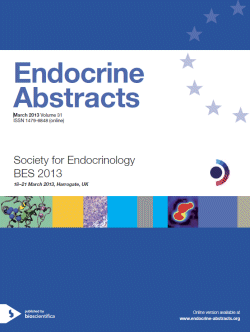Symposia
Novel aspects of GPCR signalling (Supported by the <emphasis role="italic">Journal of Endocrinology</emphasis>)
ea0031s9.1 | Novel aspects of GPCR signalling (Supported by the <emphasis role="italic">Journal of Endocrinology</emphasis>) | SFEBES2013
GPCR mutations and reproduction
ea0031s9.2 | Novel aspects of GPCR signalling (Supported by the <emphasis role="italic">Journal of Endocrinology</emphasis>) | SFEBES2013
Persistent signaling by TSH receptors
ea0031s9.3 | Novel aspects of GPCR signalling (Supported by the <emphasis role="italic">Journal of Endocrinology</emphasis>) | SFEBES2013
In vivo dimerization of LH receptors
Rivero-Muller Adolfo , Jonas Kim , Trehan Ashutosh , Hanyaloglu Aylin , Huhtaniemi Ilpo
ea0031s9.4 | Novel aspects of GPCR signalling (Supported by the <emphasis role="italic">Journal of Endocrinology</emphasis>) | SFEBES2013




